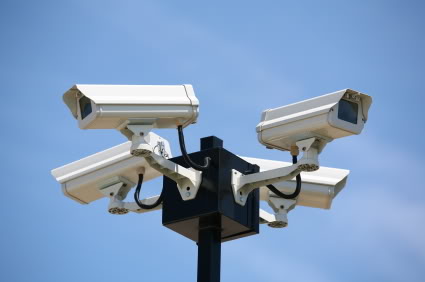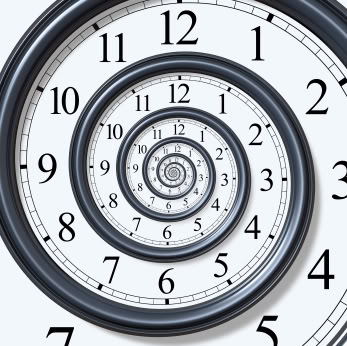ALL4’s: Is That Your Final Answer?
Last Month’s Answer and Winner:
ALL4’s Eric Swisher should feel much better about being called “old” just because he had used the piece of emission testing equipment pictured in last month’s “Is That Your Final Answer” question. Along with Darius Rogers, there were several individuals who correctly identified the emission testing equipment as an orsat (see U.S. EPA Test Method 3B for CO2, O2, and CO measurements) and more than a few of the respondents admitted to using an orsat to make measurements during their career. Thanks to everyone for participating in last month’s quiz.
Question: 
July’s “Is That Your Final Answer” question involves an annually occurring melancholy that affects ALL4’s CEO Bill Straub every June 21st (i.e., the summer solstice). June 21st is, of course, the first day of summer and the day after which all of the days get shorter as we progress towards the winter solstice on December 21st. However, even though Bill is an early riser, we submit that Bill should be holding off his melancholy until June 29th and that his melancholy should lift on December 9th. What is the astronomical significance of these two dates?
Answer:
Please e-mail your answer to final.answer@all4inc.com. Include in the e-mail your name, answer, and address (to receive your prize).
The final answer feature of 4 The Record is designed to test your knowledge across the environmental field, quiz you on the building blocks of air quality rules, stump you on ALL4 general trivia, and challenge you with brain teasers that have perplexed us. The first correct answer e-mailed to us will qualify the respondent for free ALL4 gear and will enter the winner in our end-of-the year “Final Answer Championship.” The subsequent month’s 4 The Record will identify the winner and the correct answer from the previous month’s question. You must be an active subscriber of 4 The Record to win a monthly prize and be eligible for the championship prize. ALL4 employees and family members are not eligible to compete. Hope you enjoy this feature and good luck!
U.S. EPA Regional, State, and Local Dispersion Modelers Workshop Slides Available
U.S. EPA has made available the presentations from the U.S. EPA Regional, State, and Local Dispersion Modelers Workshop (Workshop) held in Atlanta, GA on June 9, 
NESHAP Comment Periods Extended
On July 1, 2011, U.S. EPA announced that it was extending the comment periods for two (2) rules: the proposed new National Emission Standards for Hazardous Air Pollutants (NESHAP) for Coal- and Oil-Fired Electric Utility Steam Generating Units (Utility MACT), and the proposed changes to the existing NESHAP for Secondary Lead Smelting (Secondary Lead Smelting MACT).
U.S. EPA is extending the comment period for the Utility MACT for an additional 30 days due to requests received from both the public and the members of Congress. The extension will provide the public with additional time to submit comments and supporting data. The public comment period will end on August 4, 2011.
The comment period for the Secondary Lead Smelting MACT was extended for an additional 21 days due to a request by the Association of Battery Recyclers (ABR). The ABR requested the extension in order to analyze data and review the proposed amendments to the rule. The public comment period will end on July 26, 2011.
A New Twist to Determining Applicability of Greenhouse Gas Regulations
On July 1, 2011, U.S. EPA issued a final rule which, for a period of three (3) years, defers the consideration of CO2 emissions from bioenergy and other biogenic sources (biogenic CO2 emissions) when determining whether a stationary source meets the Prevention of Significant Deterioration (PSD) and Title V Major Source Operating Permit greenhouse gas emission applicability thresholds. During this period stationary sources that construct or modify equipment that emits CO2 can avoid the application of PSD requirements to CO2 emissions that are generated from the combustion or decomposition of biologically-based materials other than fossil fuels and mineral sources of carbon. Also during this period biogenic CO2 emissions will be excluded when determining if a facility is required to have a Title V Operating Permit solely because of the level of its CO2 emissions. The three (3) year deferral took effect when the notice of this action was published in the Federal Register on July 20, 2011.
Last year U.S. EPA promulgated the PSD and Title V Greenhouse Gas (GHG) Tailoring Rule (75 FR 31514, June 3, 2010) which established thresholds and timing for regulating GHG emissions under major source air permitting programs. Even though U.S. EPA acknowledged that the combustion of certain types of biomass that generates CO2 emissions can be part of the national strategy to foster the expansion of renewable resources, reduce dependence on fossil fuels, and address climate change, at the time U.S. EPA did not exempt biogenic CO2 from the applicability determinations of the GHG Tailoring Rule. Now U.S. EPA has decided to issue a temporary deferral for biogenic CO2 to allow time to conduct a detailed examination of the science and technical issues related to accounting for biogenic CO2 emissions and ensure that any fuels and materials with negligible net atmospheric impact are not being subjected to unnecessary regulation.
U.S. EPA is implementing the deferral of biogenic CO2 by amending the definition of “subject to regulation” in its PSD and Title V regulations to exclude biogenic CO2 emissions. This new rule change defines “biogenic CO2 emissions” as emissions of CO2 from a stationary source directly resulting from the combustion or decomposition of biologically-based materials other than fossil fuels and mineral sources of carbon. U.S. EPA provides examples of biogenic CO2 emissions as including, but not being limited to, the following:
- CO2 generated from the biological decomposition of waste in landfills, wastewater treatment, or manure management processes;
- CO2 from the combustion of biogas collected from biological decomposition of waste in landfills, wastewater treatment or manure management processes;
- CO2 from fermentation during ethanol production;
- CO2 from combustion of the biological fraction of municipal solid waste or biosolids;
- CO2 from combustion of the biological fraction of tire-derived fuel; and
- CO2 derived from combustion of biological material, including all types of wood and wood waste, forest residue, and agricultural material.
For sources co-firing fossil fuel and biologically-based fuel, or using mixed fuels such as municipal solid waste or tire-derived fuels, the portion of biogenic CO2 emissions from that combustion are included in the deferral, but the fossil fuel CO2 emissions are not.
Consistent with the PSD and Title V rules applicable to other non-GHG pollutants, this rule change does not define or prescribe a specific method to be used to calculate biogenic CO2 or the biogenic and fossil fuel portions of CO2 emissions from co-firing or using mixed fuels. There are various methods available to do this, including methods detailed in U.S. EPA’s Mandatory GHG Reporting Program at 40 CFR Part 98. Needless to say, the method chosen when preparing emission inventories for air quality permit applications and for demonstrating applicability or non-applicability to PSD and Title V requirements will have to be technically sound and supportable.
Another interesting twist noted by U.S. EPA in the preamble to this rule change is that the adoption of the deferral for biogenic CO2 emissions from Title V and PSD permitting programs in the Federal rules under 40 CFR Part 70 and 40 CFR §51.166 is optional for any state, local, or tribal permitting agency. Each state or local permitting authority may decide if it wishes to adopt the deferral and proceed with any necessary program changes accordingly. So in determining if and how this rule change will affect a particular source, communication with state and local agencies on what they intend to do is essential.




